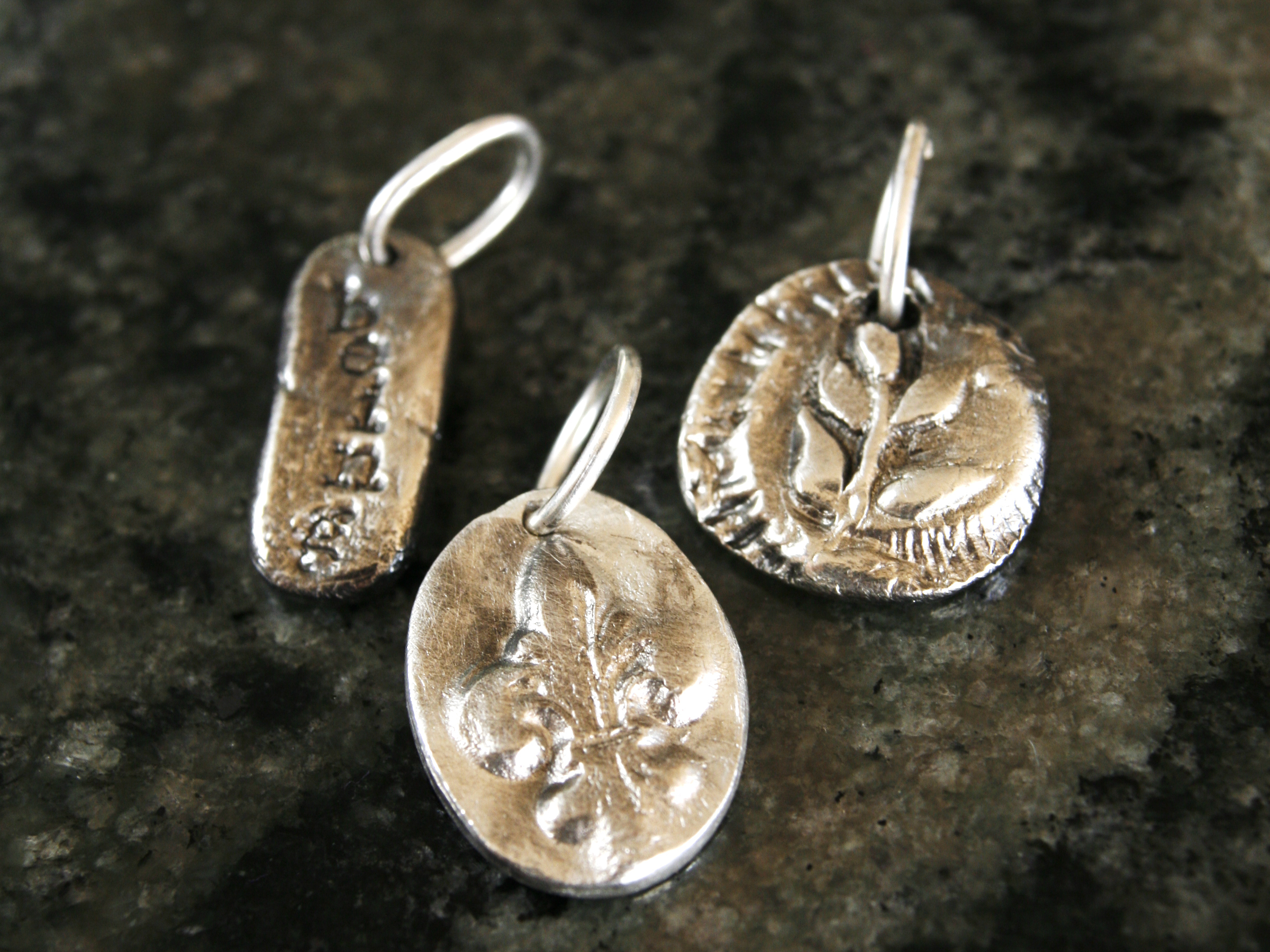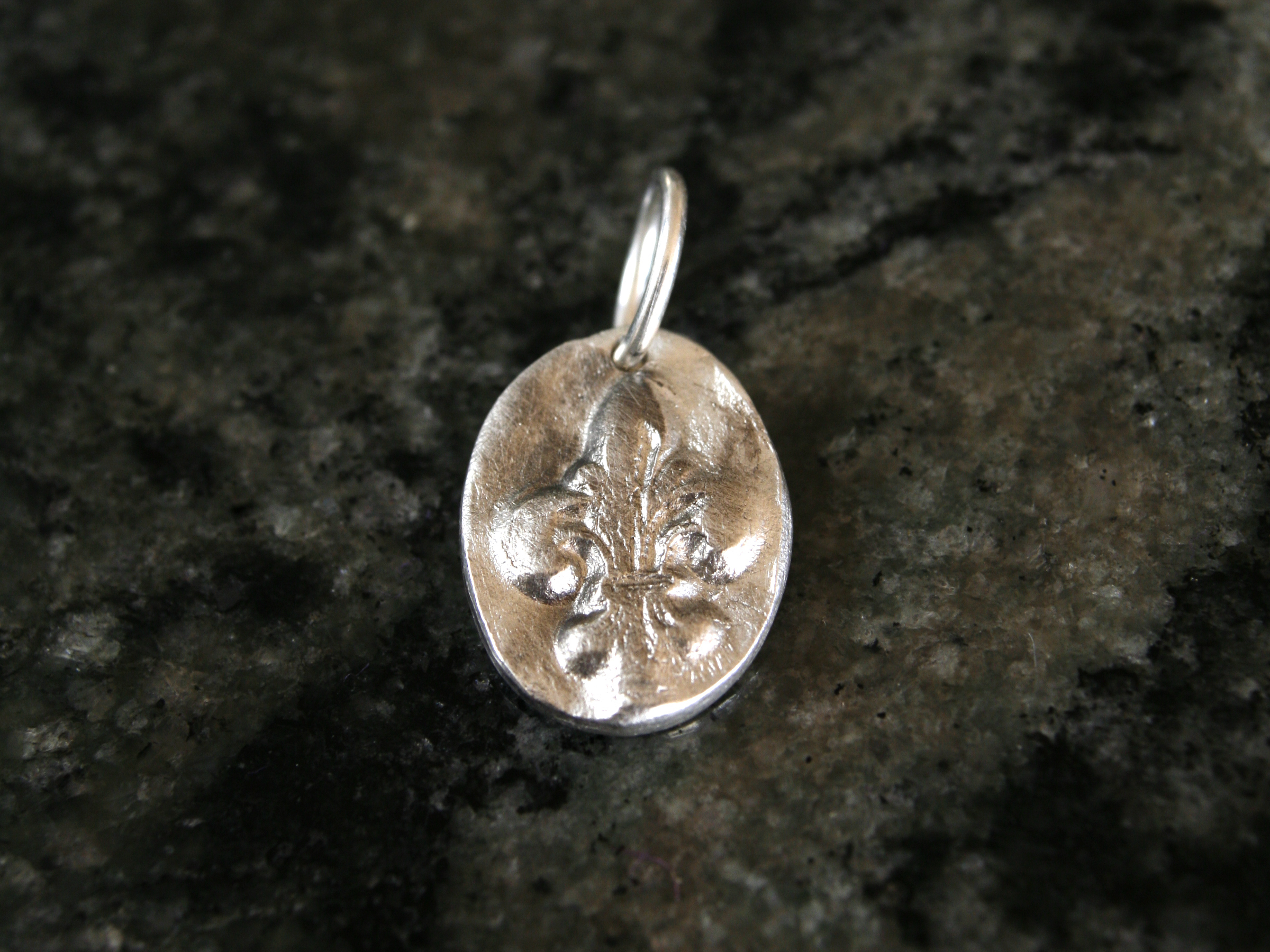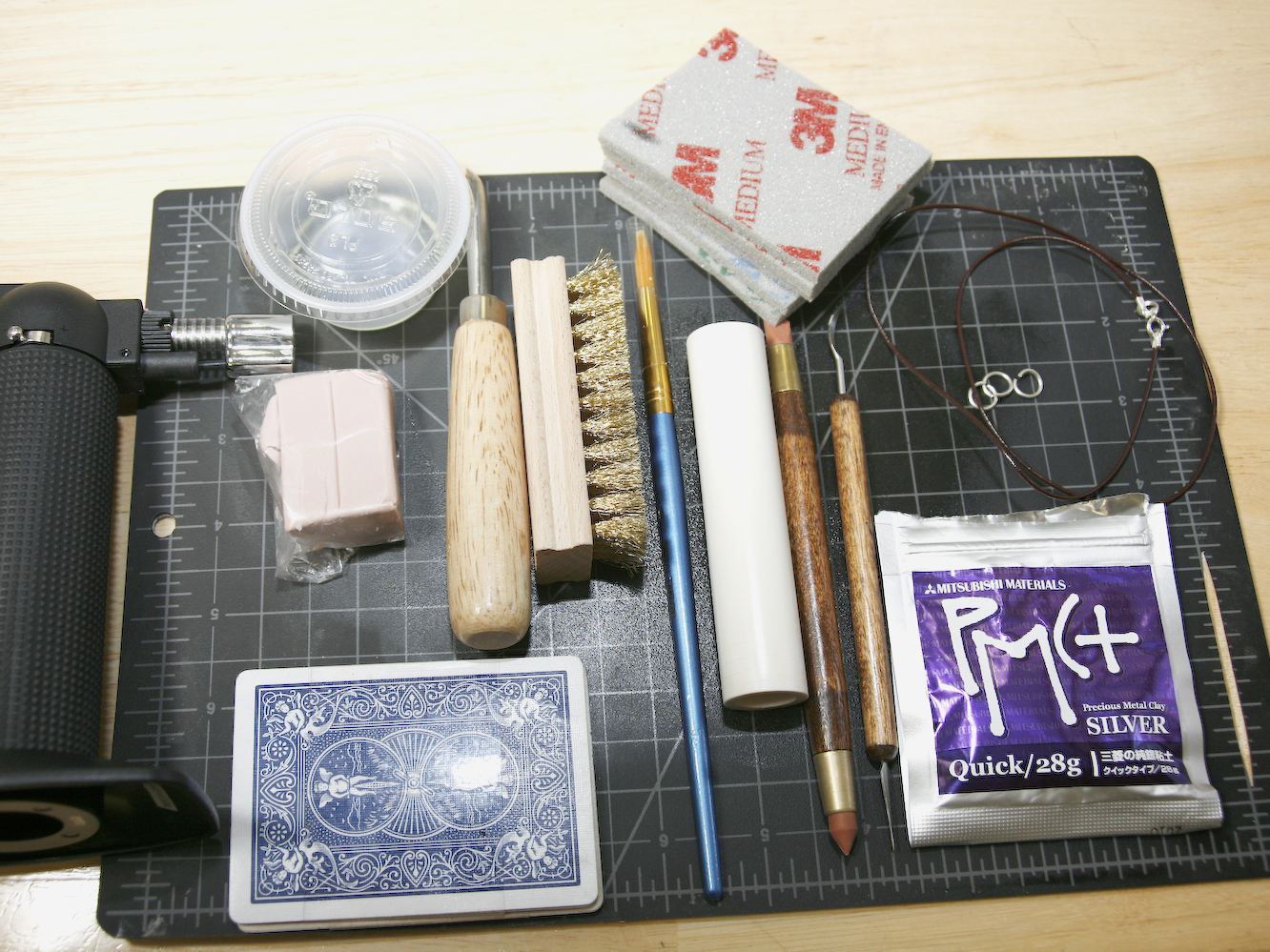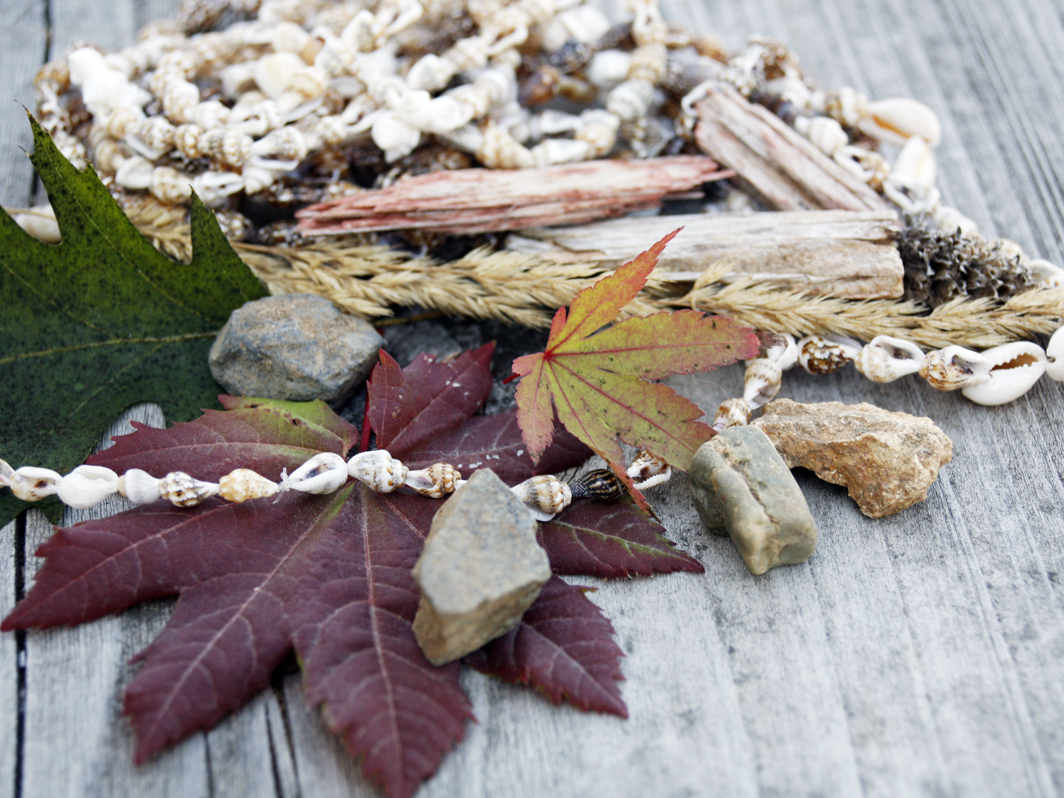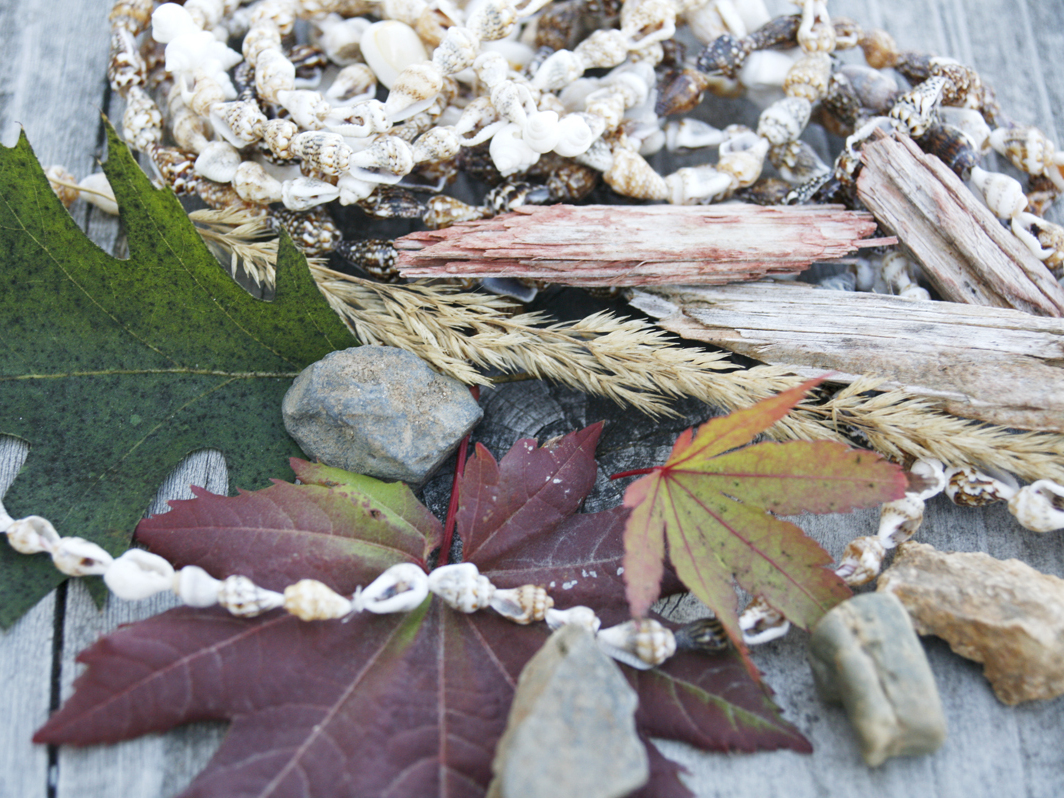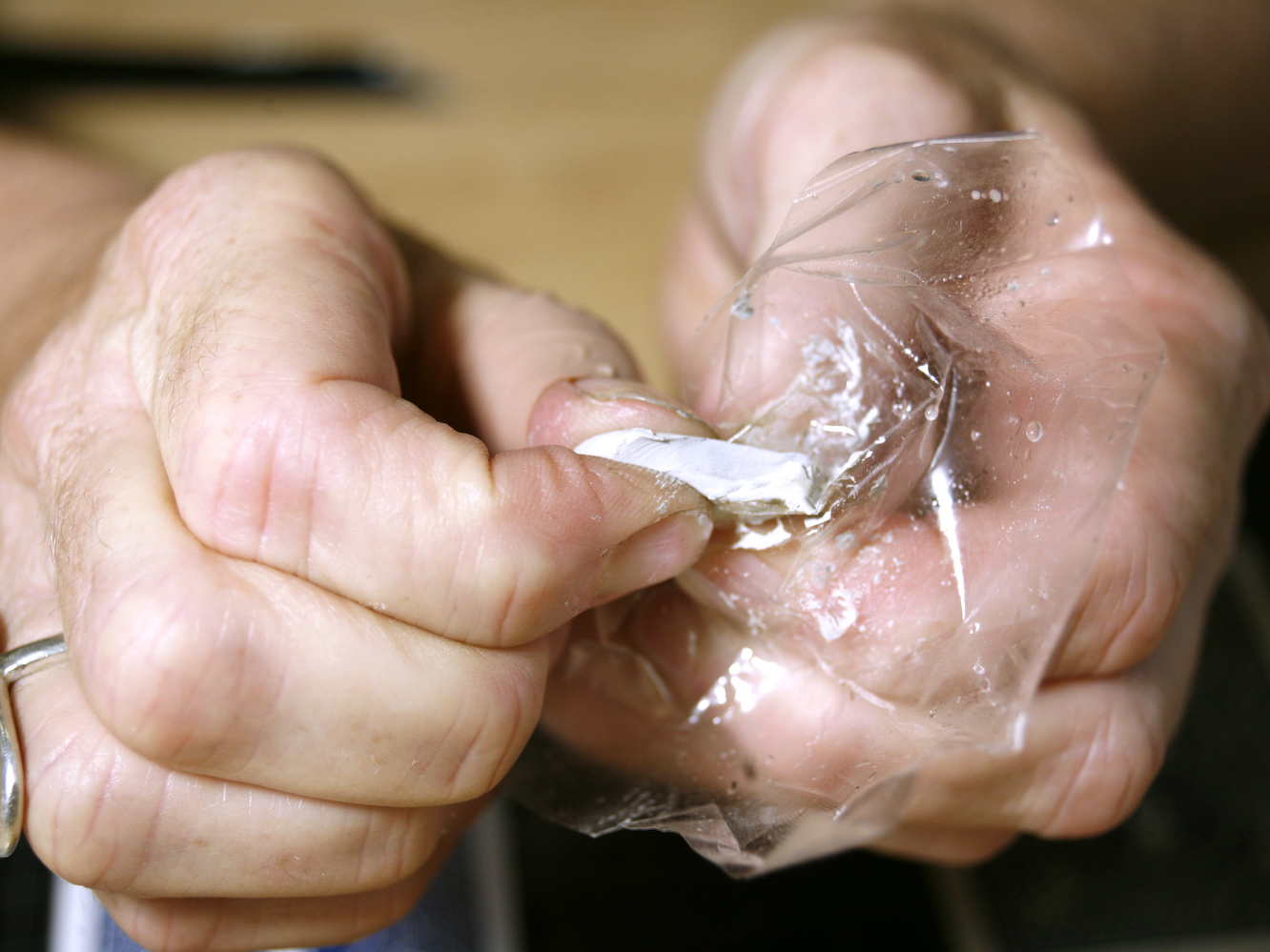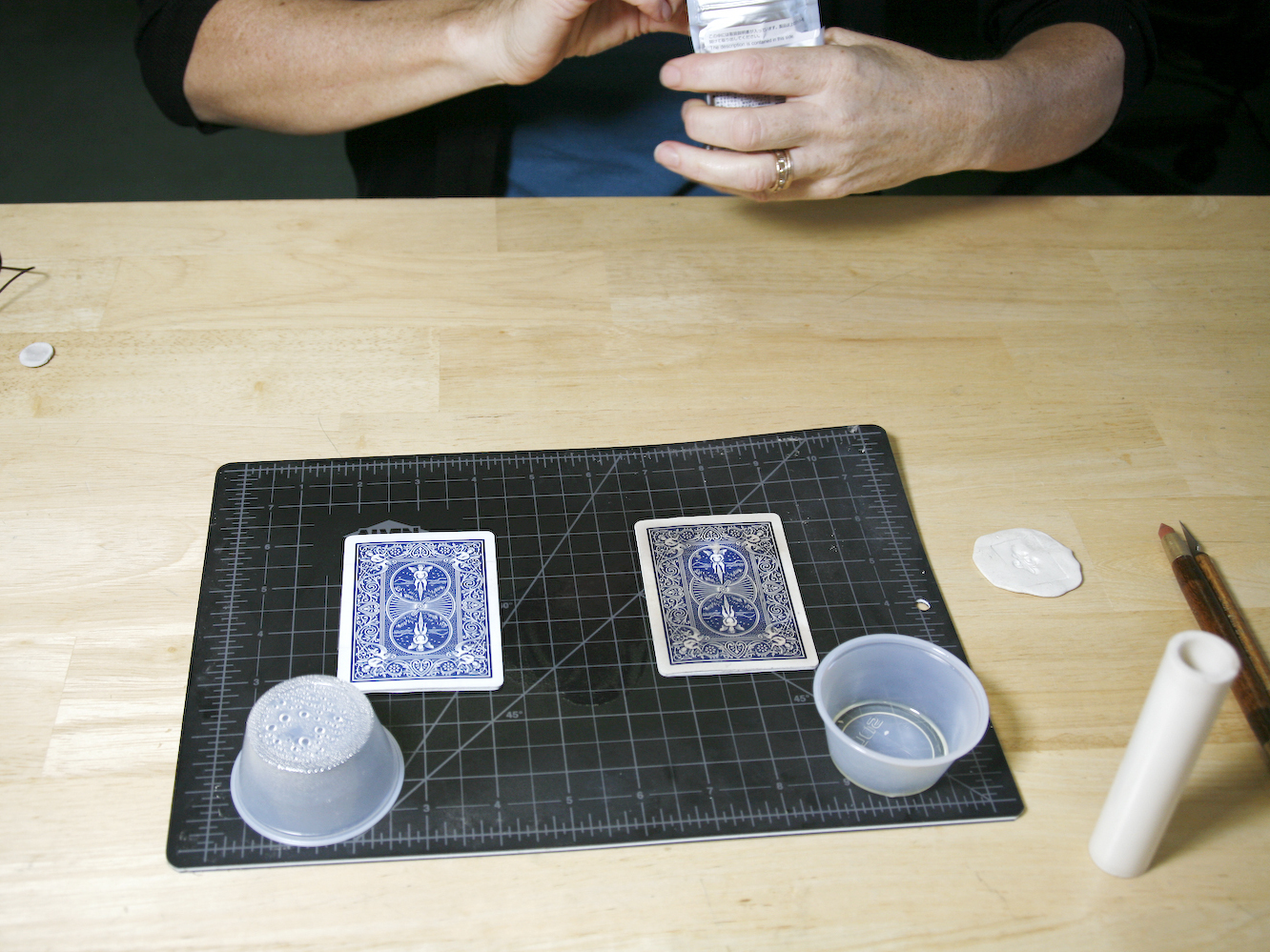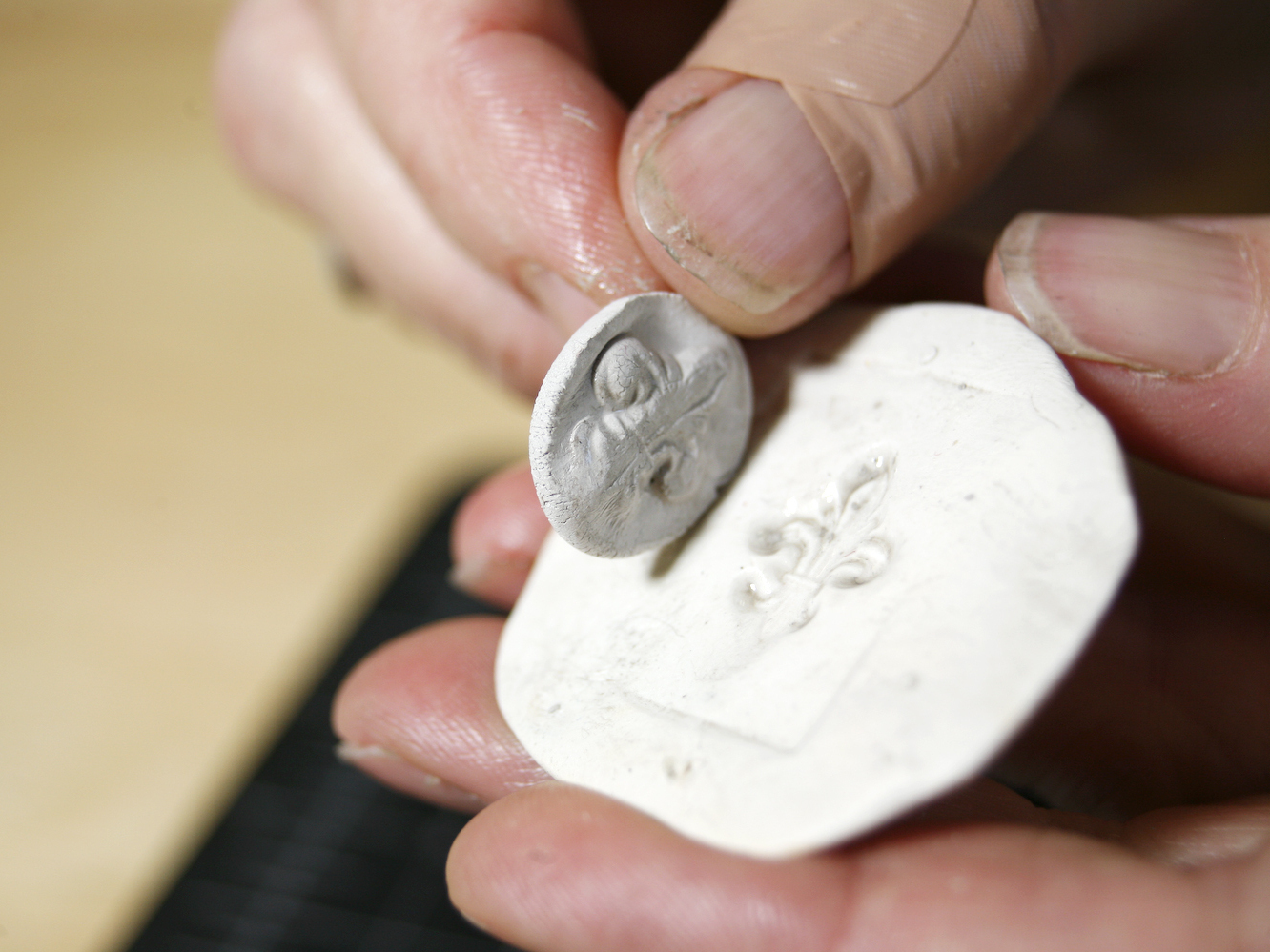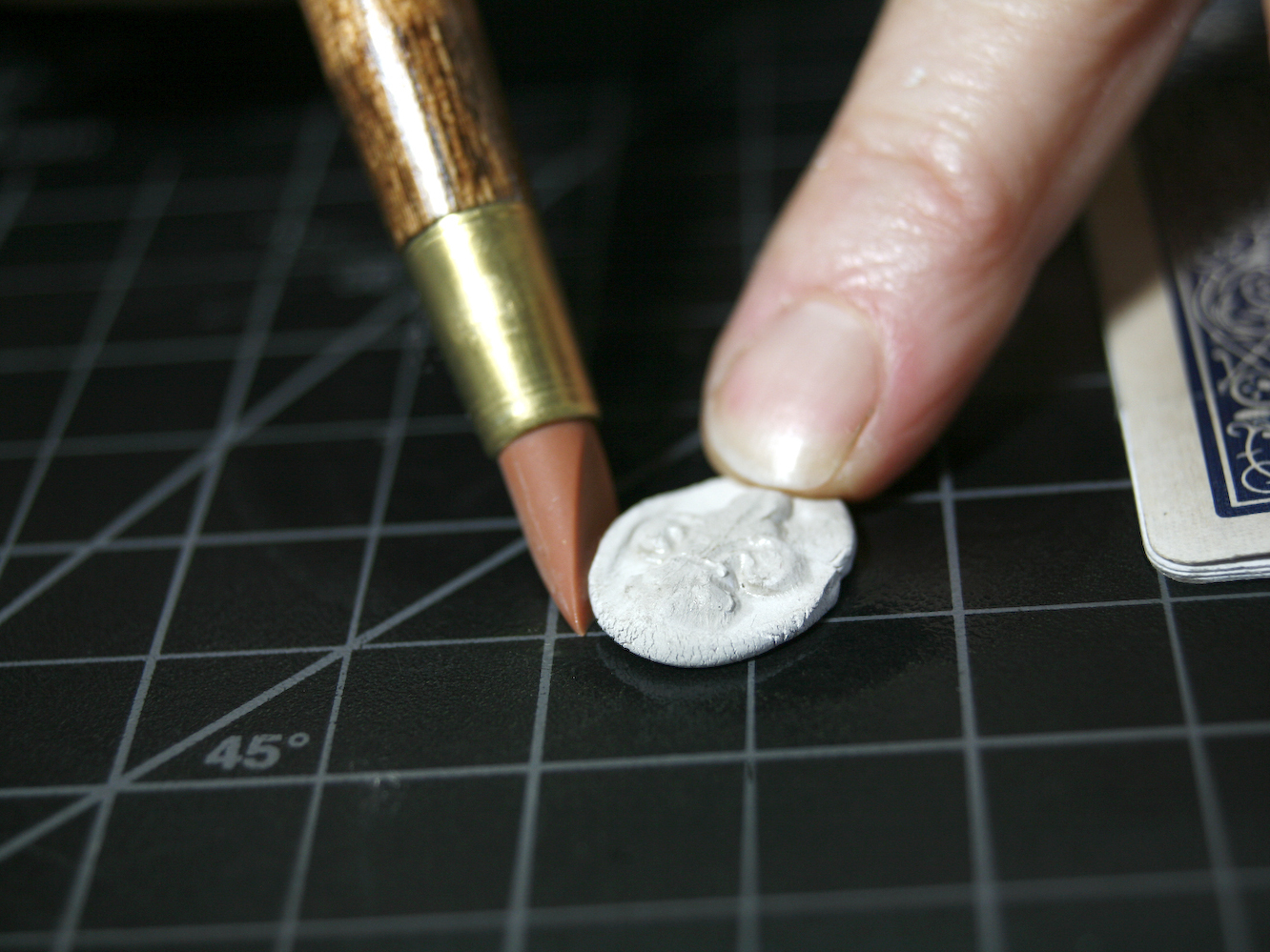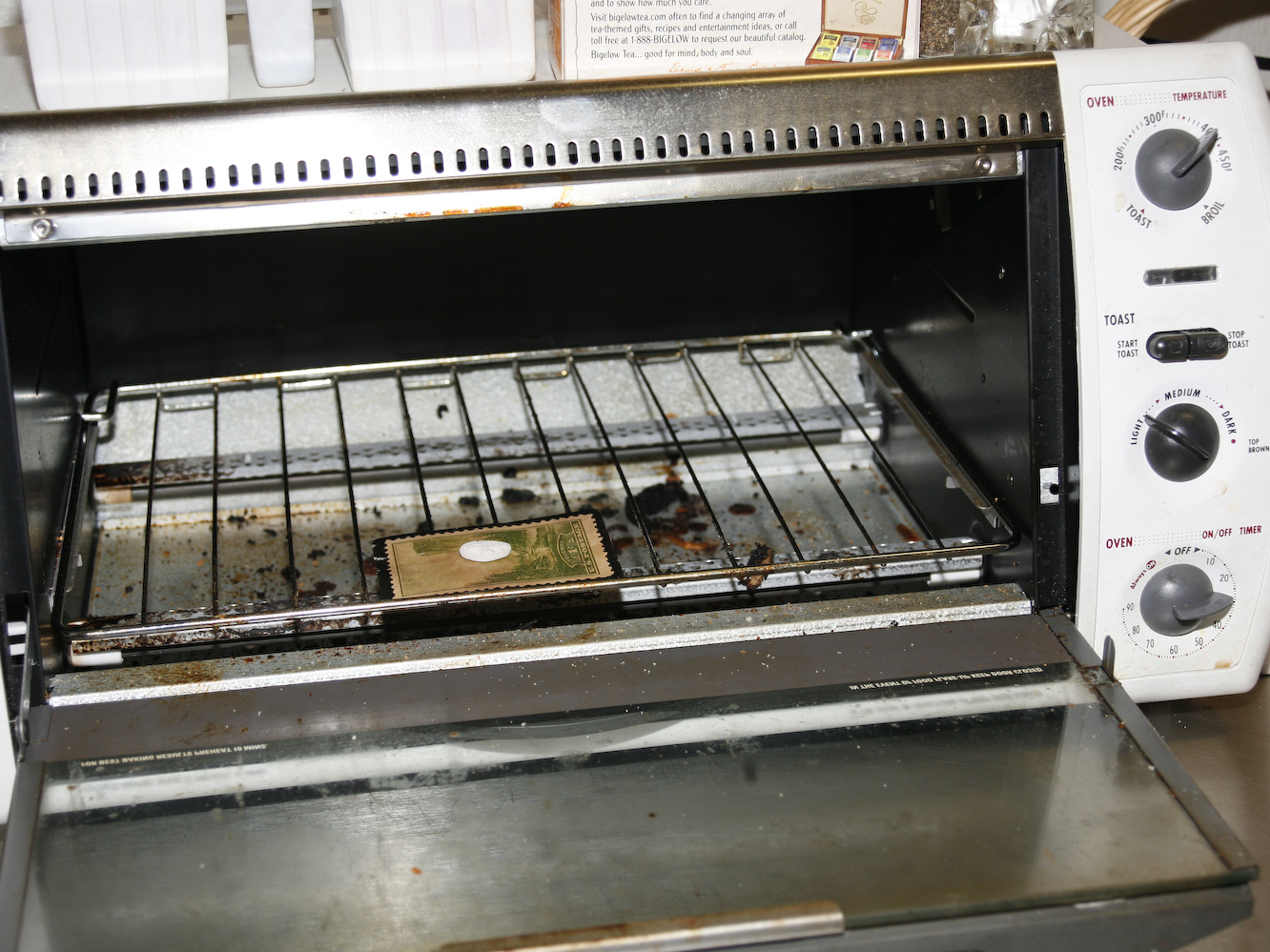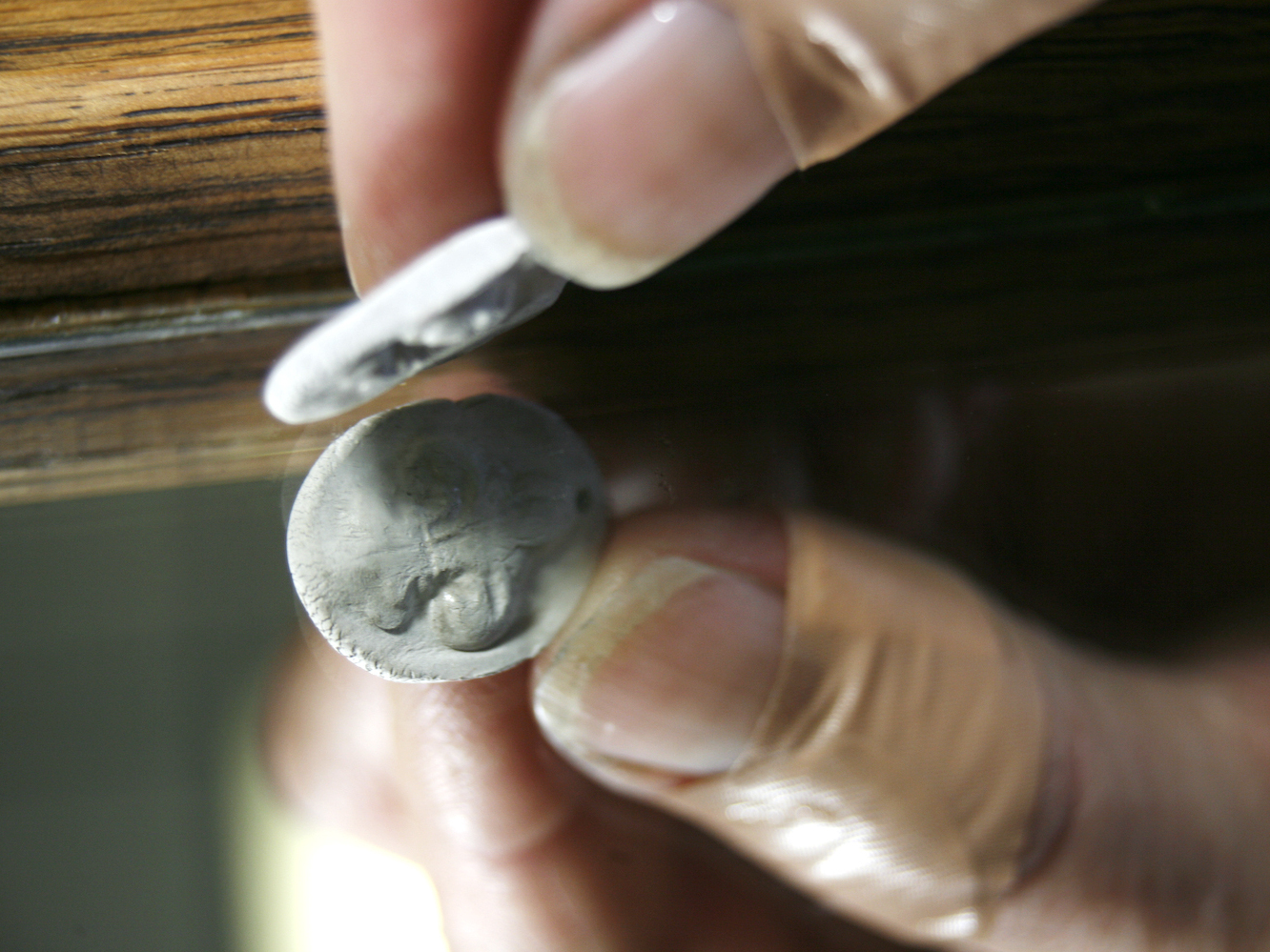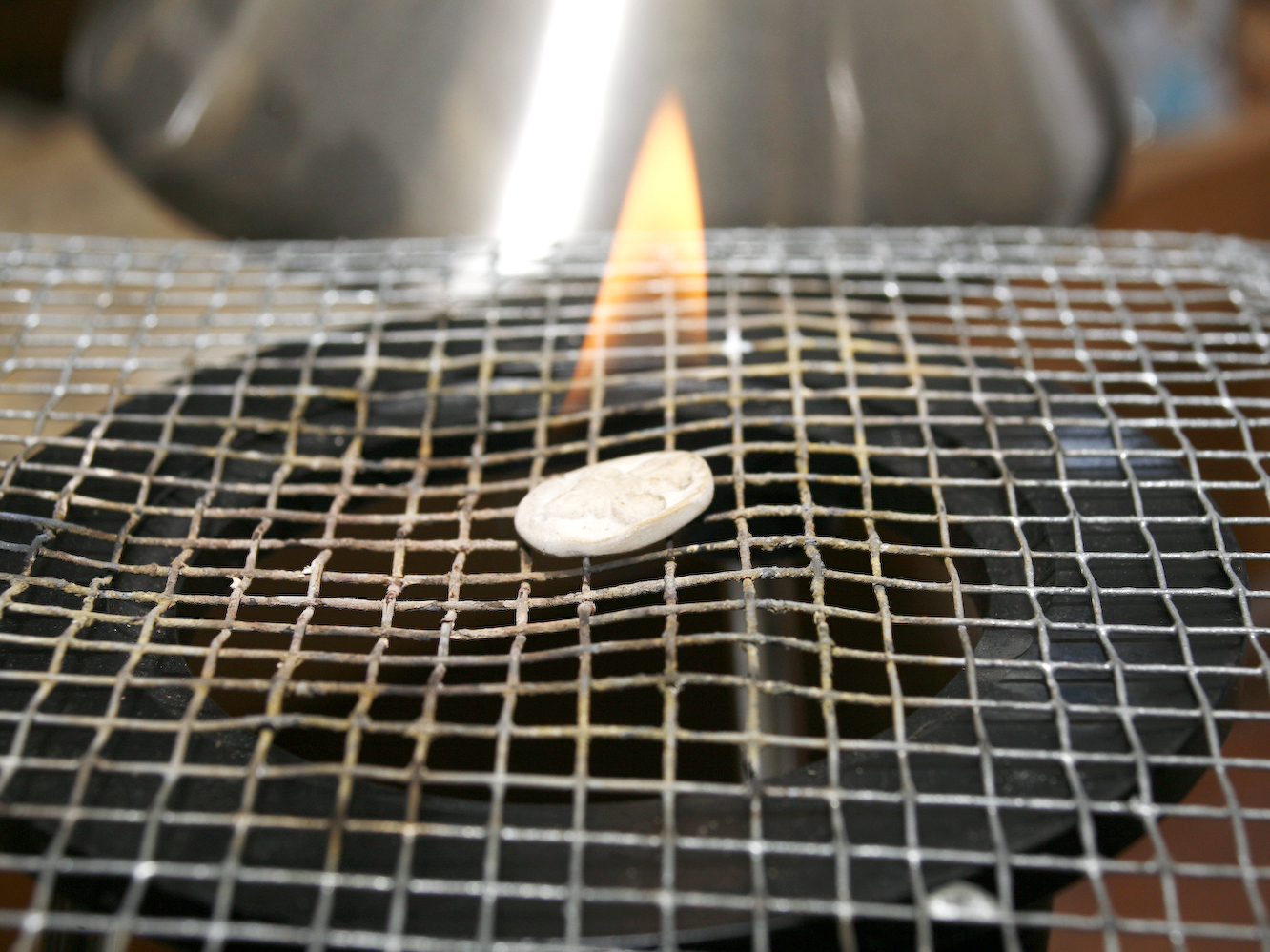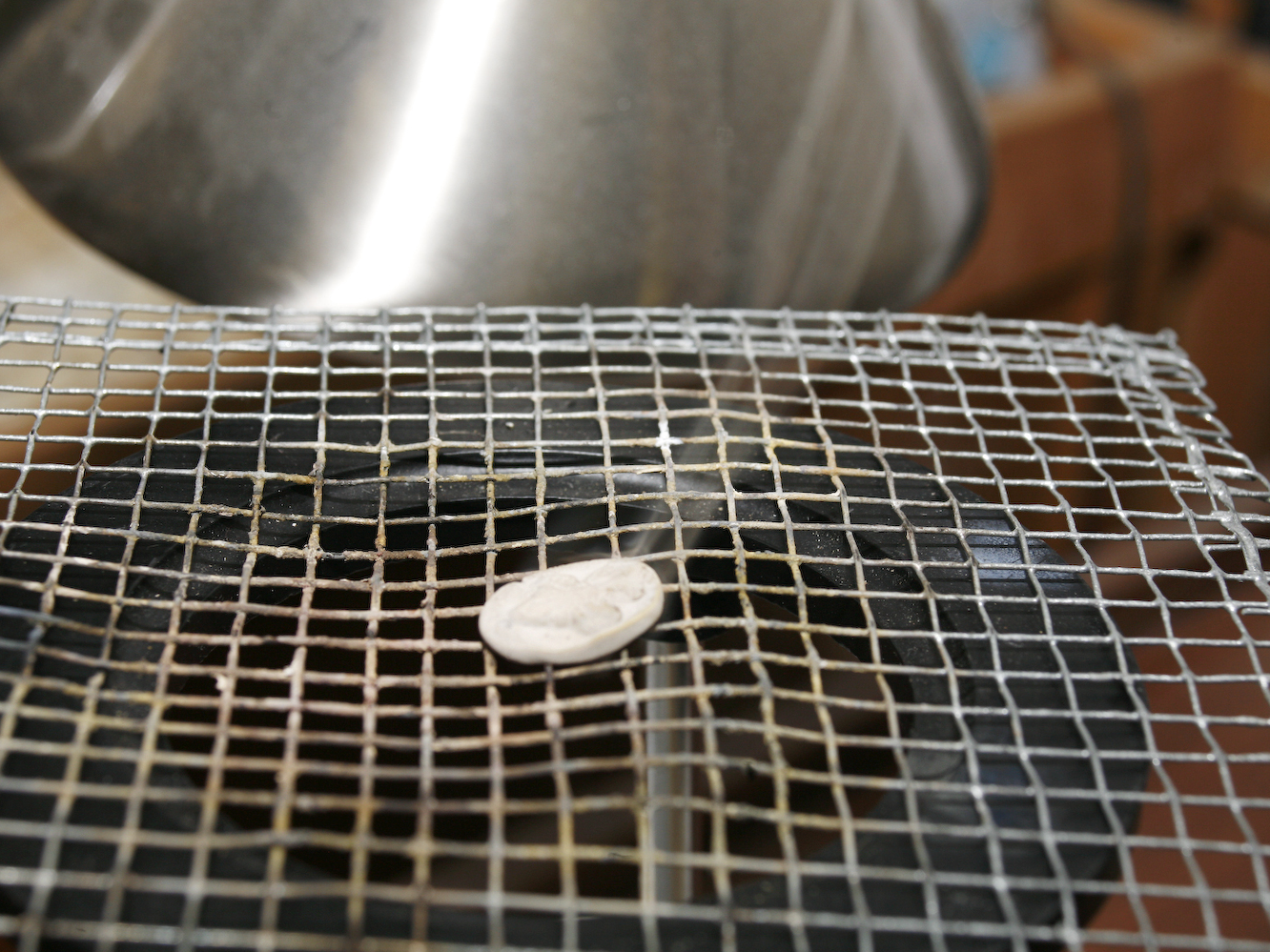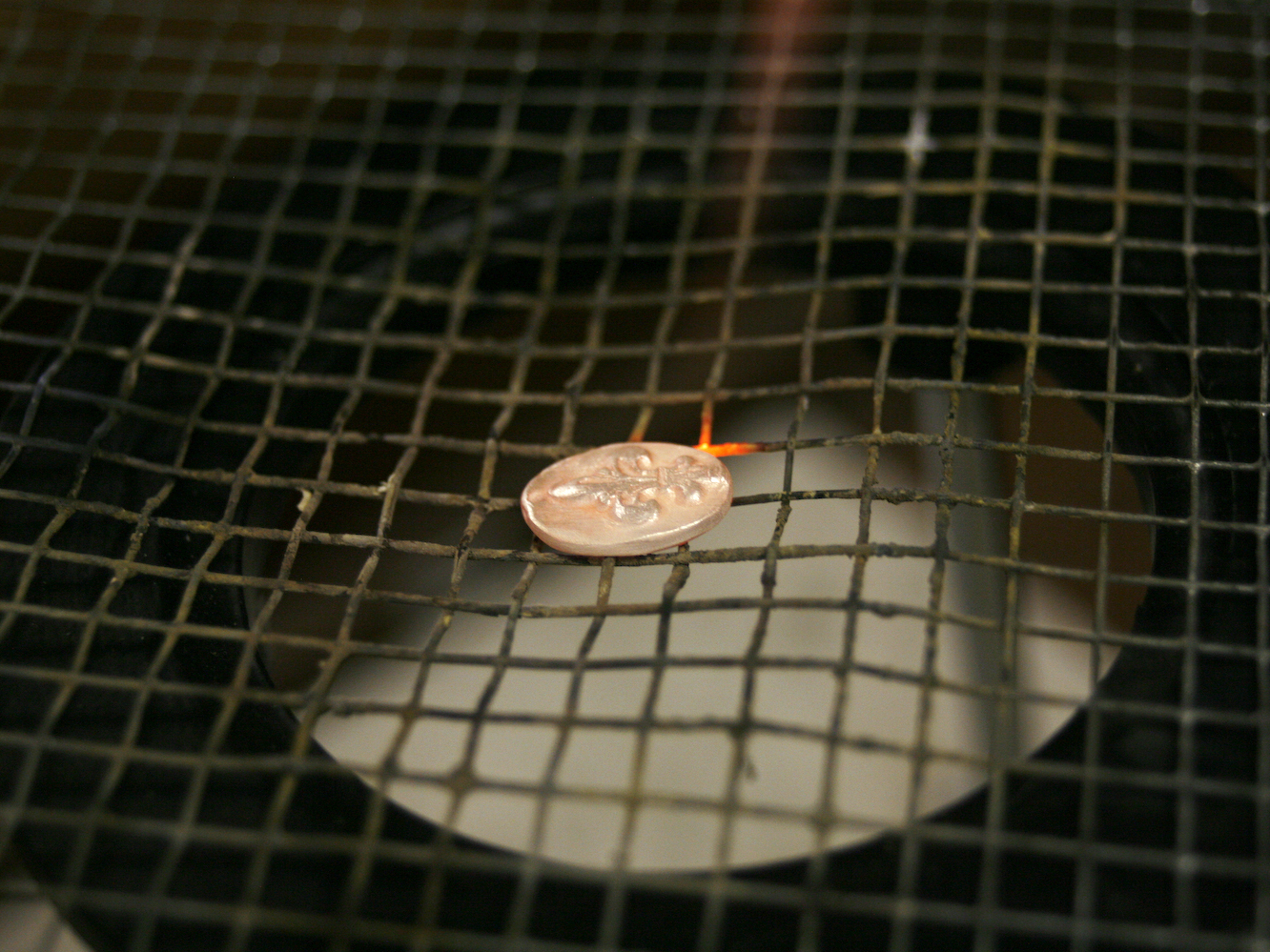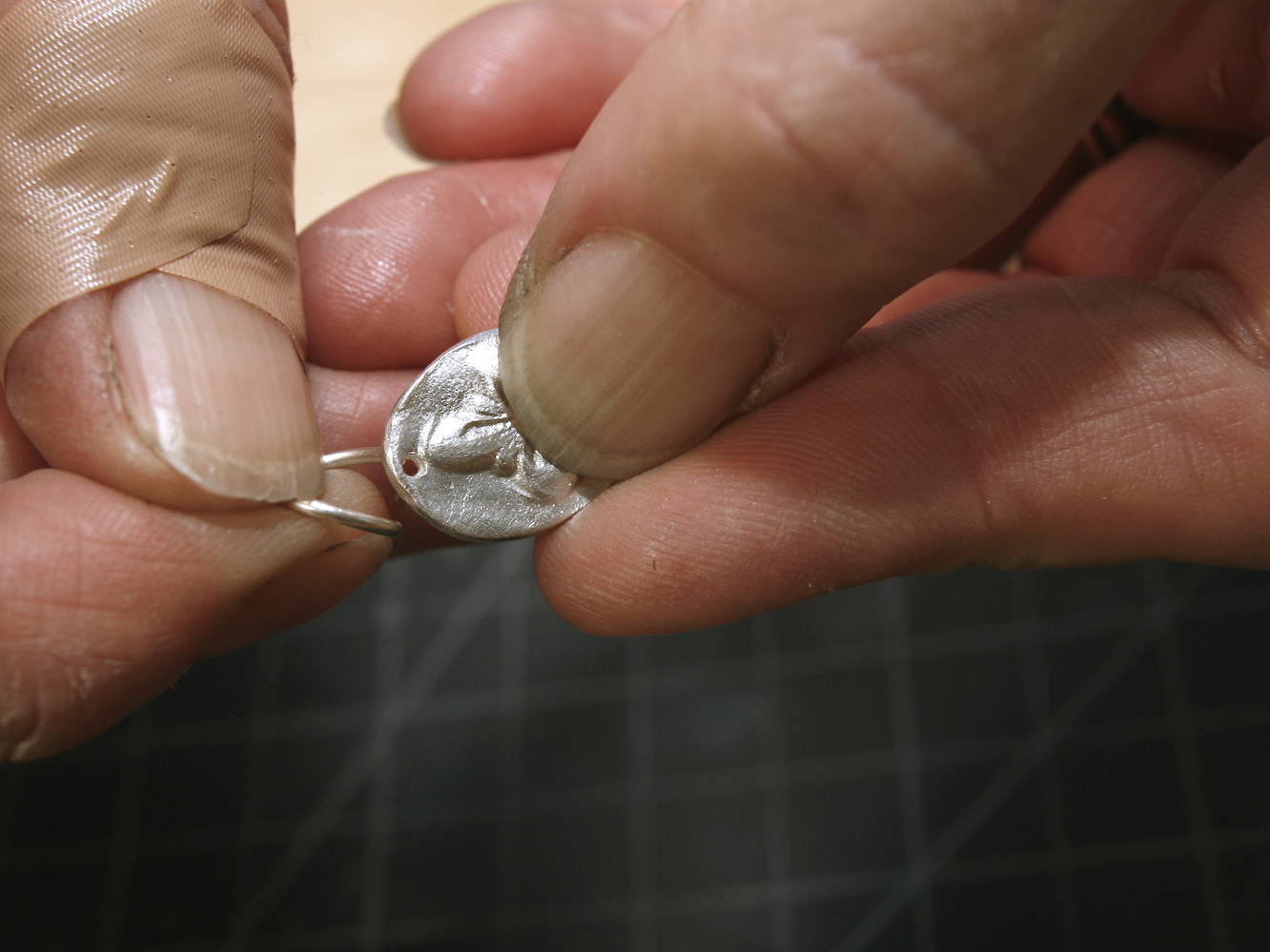Now you’re ready to fire. Firing requires keen observation — it’s important that you keep the flame moving around the piece so it won’t burn or lose too much heat.
Place your item on a mesh screen or firebrick, on top of a fireproof surface. Turn on your torch according to the torch manufacturer’s directions. Hold the torch at a 45° angle, about 3″–6″ away from your piece. Remember to keep the torch moving — don’t keep the flame on one area! Slowly heat the piece, using an even, circular motion. The item will begin to smoke.
Continue moving in a circular motion until the piece catches on fire — this is the binding agent burning away. Once it’s on fire, keep your torch on, but redirect the flame away from your piece until the burning stops.
As soon as the burning stops, move in again with the torch, continuing the circular motion until the piece turns a peach color. Watch carefully so that your piece doesn’t get too orange. If you can’t see the color change, it may be because your lights are too bright. Set your timer for 3 minutes, slowly moving in and out as necessary, attempting to maintain the light peach color. You may notice your piece shrinking in size; this is normal. If your piece is too hot, it will melt by first turning a bright silver color. If this happens, remove the heat immediately. If the piece loses its color, bring it back to its peachy color and start your timer again.
When the firing is complete (the peachy color is held for 3 minutes.), turn your torch off and let your piece cool naturally. To quench your piece, use tweezers to gently pick up your item and place it in a jar of water. Be careful!
CAUTION: Don’t touch the piece with your fingers. Use tweezers!
